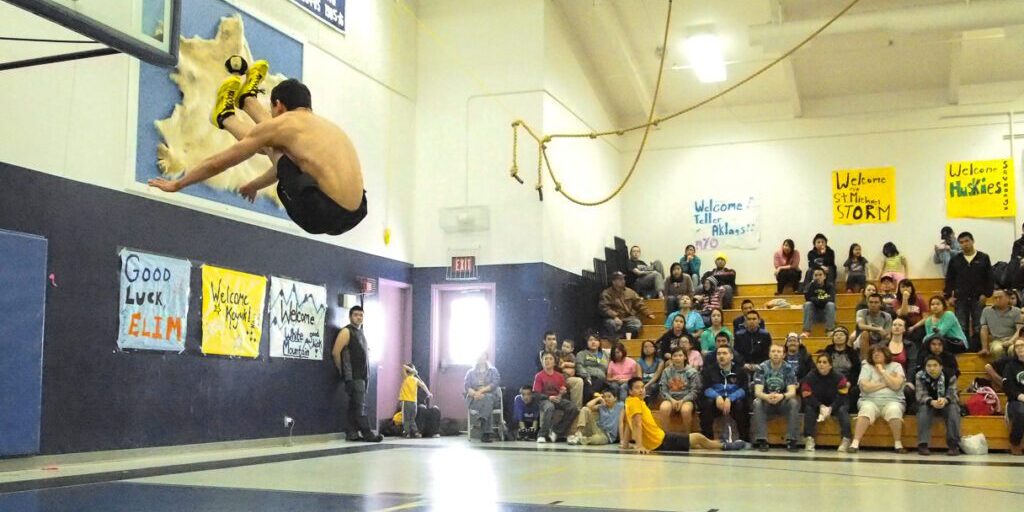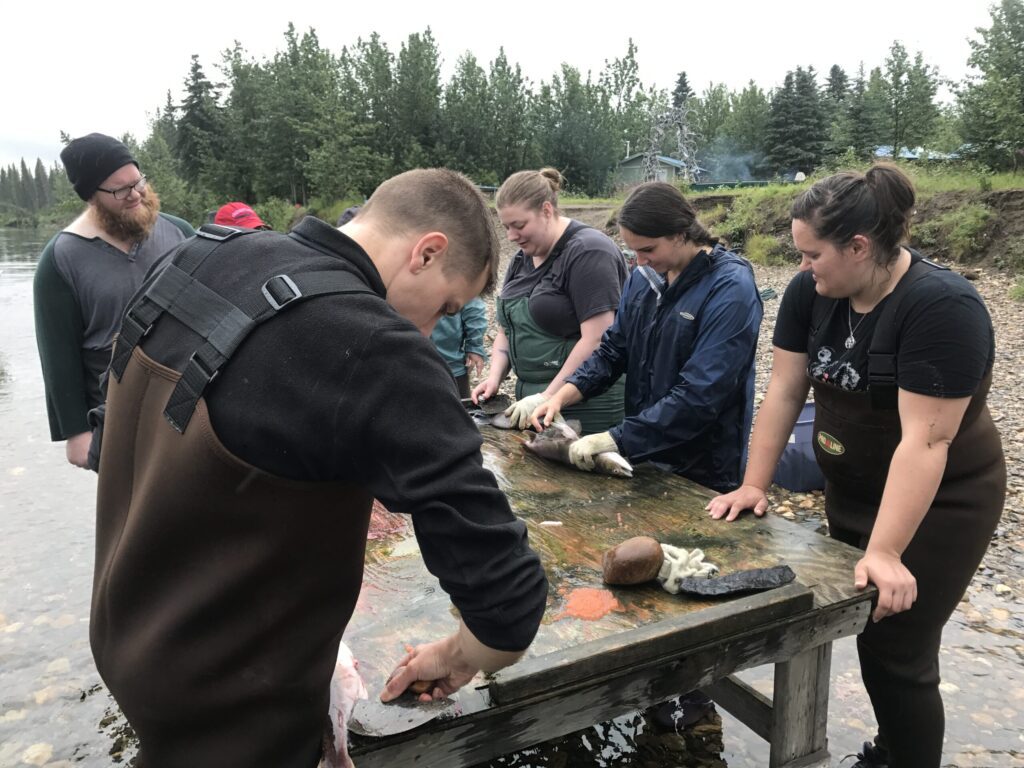Every year, athletes from across the Bering Straits Region compete in the Native Youth Olympics.
“We always appreciate being here in Gambell,” said Jeff Erickson, who coordinates the tournament for all 15 schools in the Bering Strait School District.
“We have dozens of events all year long. And this one still always is still just such a great one to close out the year, there’s so much camaraderie with strong competition,” he continued. “We love NYO.”
The event rotates every year, and Gambell hasn’t hosted in a while. The setting felt extra appropriate, since Gambell has such a strong subsistence hunting tradition, and that’s exactly where the games come from.
“All these games, they were designed by our ancestors to develop muscles that were required for survival out in the ice, in the sea, in the open ocean, or on the tundra,” said Marjorie Tahbone. She was an NYO champion in high school, and went on to medal at the World Eskimo-Indian Olympics, or WEIO. She still competes, and now coaches in Nome, too.
“The one-foot high-kick is a signal game. So what they did when they went out onto the ice with a group of hunters and they caught a whale,” she explained, “they would send a messenger from that hunting crew to do a signal kick.”

Subsistence is still a fact of life in Western Alaska. But between low King salmon runs in the Y-K delta, to a lack of snow keeping hunters from caribou, it’s been a bad year. Gambell has had an especially rough time. Subsistence is such a big part of the economy that last year’s dismal walrus harvest devastated many households. One woman apologized for the modest spread in the hospitality room—which included muktuk and reindeer stew from the local herd—saying there’d be more, but people’s freezers are empty.
Several rooms away in the school gym, the two-foot high kick was underway. BSSD’s tournament is the region’s qualifier for all ten of the events at the NYO state championships going on in Anchorage. NYO’s current form—more like a gymnastics or wrestling meet—started when games from different regions in Alaska were collected into a rulebook during the 1970s.
“I think the games teach culture, but I think they ultimately teach community,” said Nick Hansen, another former champion. He came to NYO late in high-school–because, he says, at the time he thought basketball was cooler. Now he thinks the competition in NYO aims for a goal more important than placing first.
“At the 1A basketball tournament it’s dog-eat-dog,” he said of the district’s biggest annual sports event. “It’s ‘we want to win no matter what.’ But here at the games it just builds such a great community outside that it starts to rebuild the community inside the kids.”
Nick is from Unalakleet, which this year got first in the team competition. He went back there after college, and has been coaching NYO since 2009.
“Once you’re in the games, you’re never out of the games,” he laughed.
Nick and Marjorie both believe these games are a cultural practice, one that makes a modern home for traditional activities.
“I just fell in love with it instantly,” said Marjorie, describing her first NYO practice. “I felt connected to my culture, and it really helped me to solidify a little part of myself. And that’s why I got involved.”
NYO is part of a larger conversation about how to live with traditional values today.
“We can’t be thinking that ‘oh because it’s not in a sod house,’ or ‘because you’re not wearing traditional clothing’ that what you’re doing is not traditional,” Marjorie explains. “We have these amazing places where we have gyms, we have Internet and technology, and we need to take advantage of that and adapt our culture to what is in our society now.”
That’s not an uncontroversial stance. The counter-argument is that the school and tournament setting hijacks these games, and makes them meaningless for a real subsistence lifestyle. I got a hint of this from the girl’s overall champion, Apaay Campell, who’s from Gambell, and was adored by the home-crowd. Apaay’s mom, Sharon Campell–herslef a former NYO champion– was standing next to her. She joked that Apaay is a little bit of a sports freak because of her year-round athletic schedule.
“I play basketball, volleyball, wrestling,” she rattled off, “and running.”
Apaay’s favorite is sport is basketball. That’s the one she wants to play in college, even though she’s the current world record holder for women’s kneel jump.

So the question is: are the games just games? Totally separated from their subsistence roots?
The singing and dancing on the last night of the tournament seemed to prove otherwise. It was closer to what Marjorie said about games happening in a school gym rather than a sod house. There were no costumes or masks. Not on the drummers, or on the people floating up from the bleachers for a song or two at a time. They wore Carhartts, sweatshirts, jeans—everyday clothes that made the celebration feel like an everyday activity, rather than a pageant. It had the approachable feel of a choir rather than opera.
And that’s how NYO has changed, too. Though nowadays it’s in shimmery basketball shorts and Nike sneakers, kids are still kicking, and coming from all over the region to visit and compete for bragging rights.
“It doesn’t by any means undermine our traditional ways,” said Marjorie of the school and tournament setting. “In fact it probably lifts it up and projects it in a positive way, because it’s a sport of love. And encouraging each other to do better–to jump higher, to go further–and that’s exactly what our cultural values are about: love and support and respect, and taking care of each other. And these games perpetuate that.”
Gambell’s mascot, the Qughsatkut, the king polar bears, is hardly symbolic: there is a polar bear hide mounted on the gym wall. Right behind a basketball hoop.







